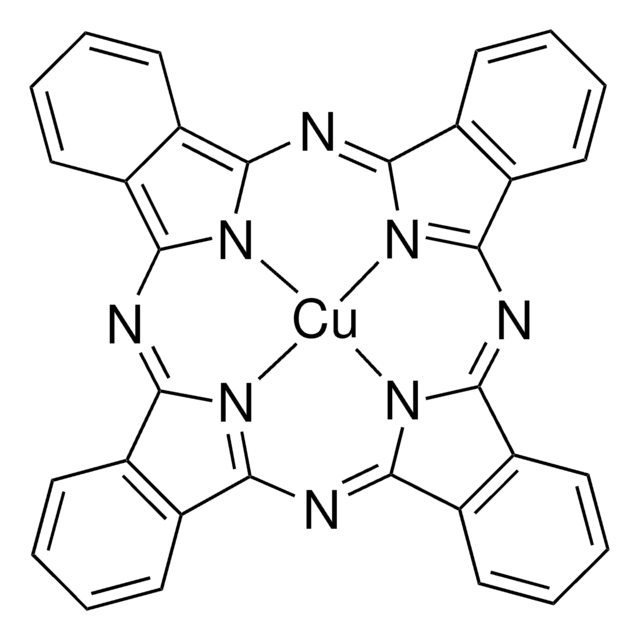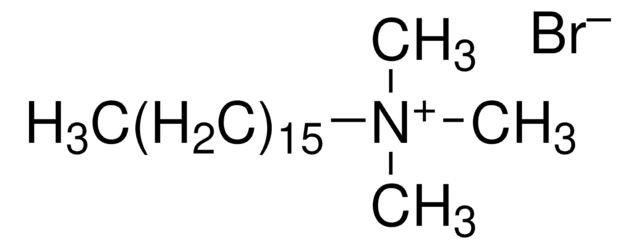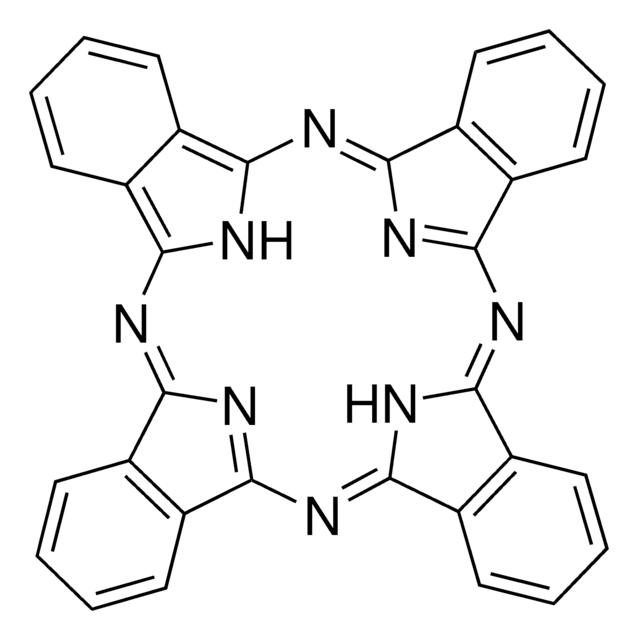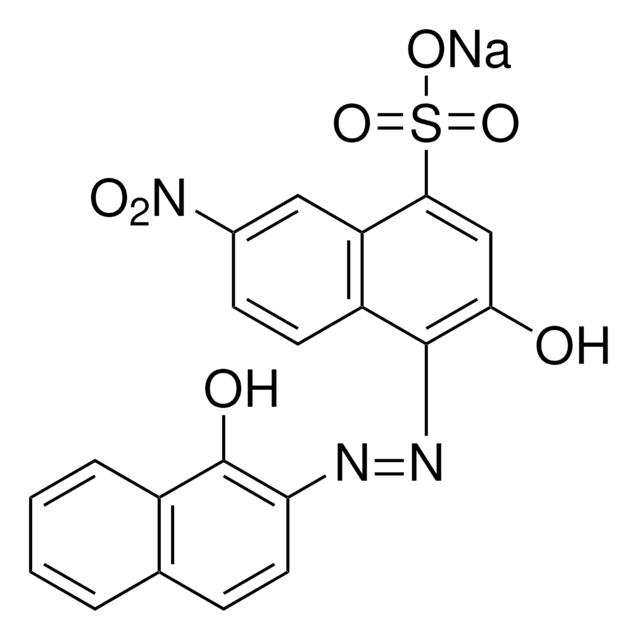432199
Leucoberbelin Blue I
Dye content 65 %
Sinónimos:
LBB
About This Item
Productos recomendados
form
powder
composition
Dye content, 65%
technique(s)
microbe id | staining: suitable
mp
>300 °C (lit.)
solubility
water: 50 g/L
λmax
253 nm
application(s)
diagnostic assay manufacturing
hematology
histology
storage temp.
room temp
SMILES string
CN(C)c1ccc(cc1)C(c2ccc(cc2)N(C)C)c3ccccc3S(O)(=O)=O
InChI
1S/C23H26N2O3S/c1-24(2)19-13-9-17(10-14-19)23(18-11-15-20(16-12-18)25(3)4)21-7-5-6-8-22(21)29(26,27)28/h5-16,23H,1-4H3,(H,26,27,28)
InChI key
MCKLFIWDQVFMEK-UHFFFAOYSA-N
Categorías relacionadas
General description
Application
signalword
Danger
hcodes
Hazard Classifications
Eye Dam. 1 - Skin Corr. 1B
Storage Class
8A - Combustible corrosive hazardous materials
wgk_germany
WGK 3
ppe
Eyeshields, Faceshields, Gloves, type P3 (EN 143) respirator cartridges
Elija entre una de las versiones más recientes:
Certificados de análisis (COA)
¿No ve la versión correcta?
Si necesita una versión concreta, puede buscar un certificado específico por el número de lote.
¿Ya tiene este producto?
Encuentre la documentación para los productos que ha comprado recientemente en la Biblioteca de documentos.
Nuestro equipo de científicos tiene experiencia en todas las áreas de investigación: Ciencias de la vida, Ciencia de los materiales, Síntesis química, Cromatografía, Analítica y muchas otras.
Póngase en contacto con el Servicio técnico






